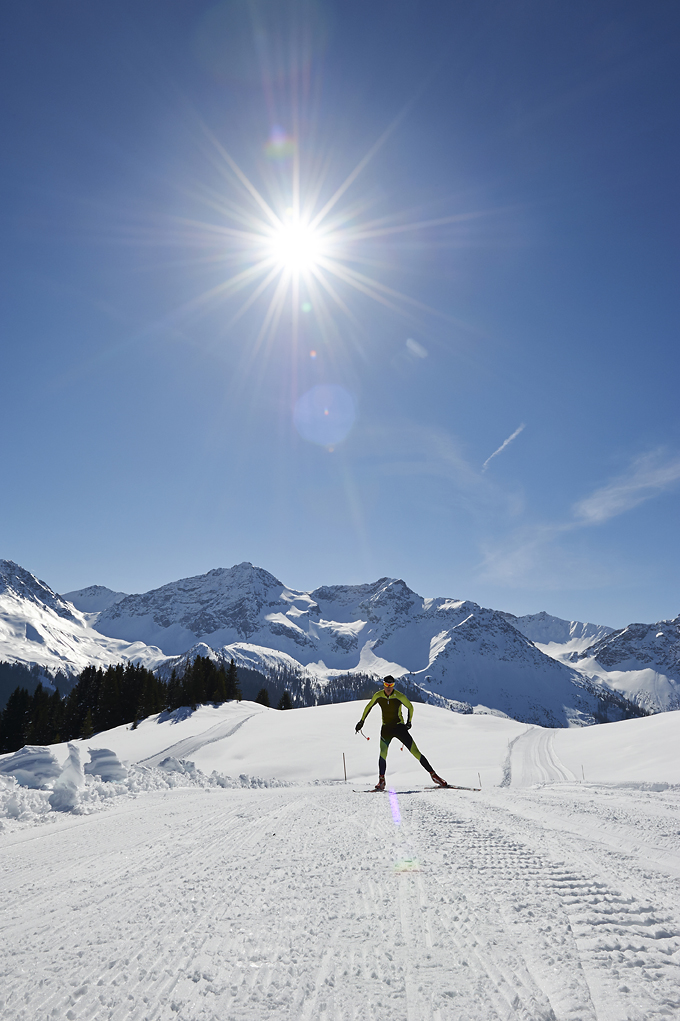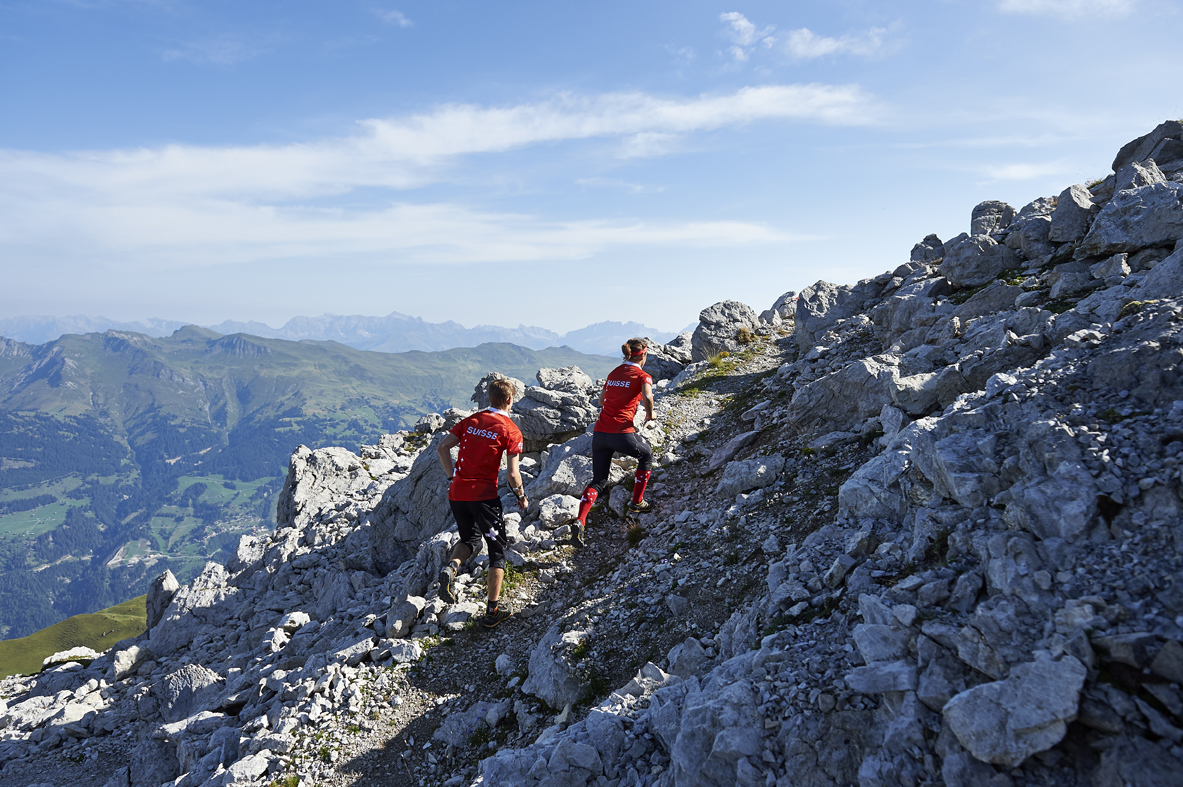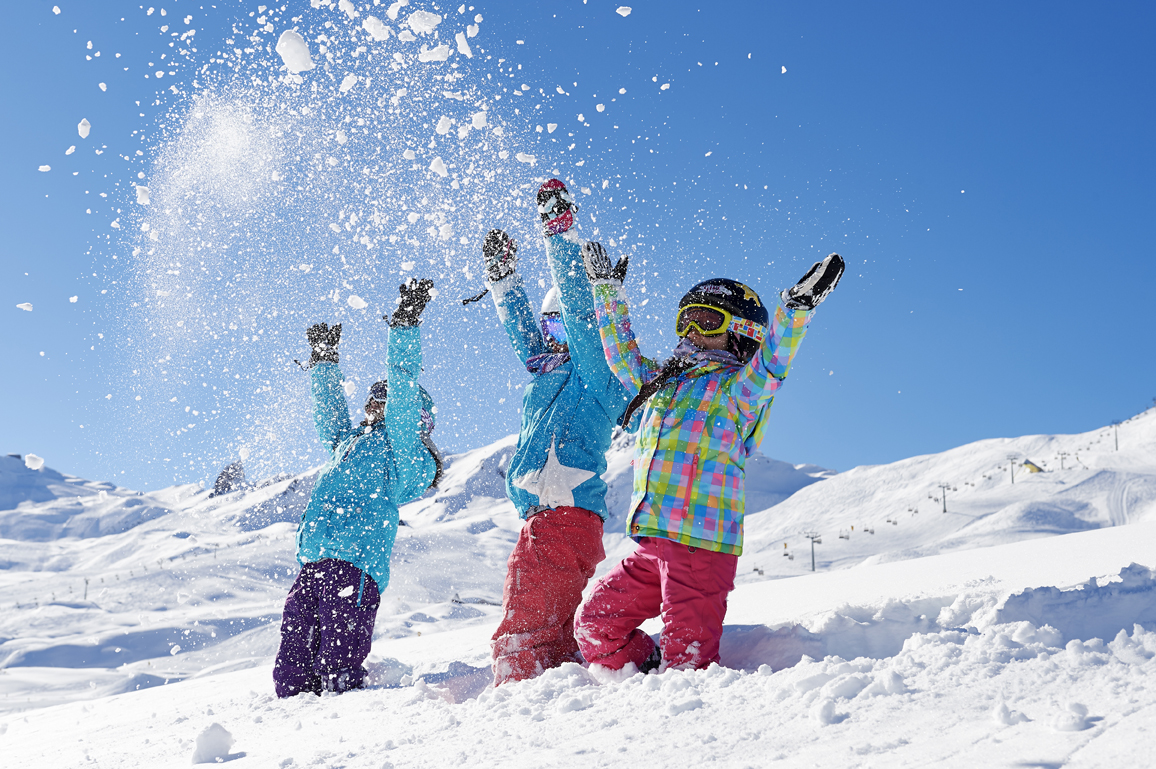.jpg)
Arosa Card
Auf die Sommersaison 2021 hin wird nun der Einzugsbereich der Arosa Card dank einer Änderung des Kurtaxengesetzes in der Gemeinde Arosa deutlich erweitert. Ab dann können auch die Gäste aus dem Talgemeinden ab Litzirüti bis Lüen von den vielfältigen Angeboten profitieren und - für die Swiss O Week 2021 besonders wichtig - insbesondere die Aroser Bergbahnen zur Anreise an die Etappen „am Berg“ gratis nutzen. Deshalb ist das Startgeld der diesjährigen Swiss O Week so attraktiv günstig.
.jpg)
Arosa in 100 Geschichten - Jeder Gipfel eine Skitour
Arosa versinkt im Neuschnee, die weissen Hänge laden zu Touren abseits der Piste ein. Wisst ihr was Winnetou mit den Freeriderhängen in Arosa zu tun hat? Die Antwort findet ihr in einen weiteren Auszug aus dem Buch „Arosa in 100 Geschichten“ von Peter Röthlisberger:
Für Tourenfahrer und Freerider sind die Berge um Arosa ein Geschenk. Alleine ist man allerdings nicht unterwegs. Die einstigen Geheimtipps sind keine mehr.
.jpg)
Eines der letzten grossen Rätsel der Off-Piste-Geografie ist Winnetou. Jeder Tourenfahrer in Arosa kennt das steile Couloir an der Amselfluh mit auskragendem Einstieg. Aber keiner weiss, wieso es nach dem Mescalero-Apachen-Häuptling benannt ist. Erfinder von Winnetou ist Karl May, aber wer erfand den Namen für das Couloir? Die alten Hasen der Aroser Bergführerszene sind ratlos, ebenso die Flurnamenspezialisten. Man weiss nur, dass das Couloir mit der markanten, senkrechten Felsflanke, die vom Dorf aus zu sehen ist, schon von der Elterngeneration so genannt wurde.
Etymologisch keine Herausforderung sind die Hänge an der Frontseite des Weisshorns. Die Flanke unter der Gondelbahn heisst Rettich, weil der gleichnamige Arzt und Arosa-Gast dort in einem Schneebrett ums Leben kam. Am Telefonhang wurde einst eine Leitung gezogen. Die Stelle unter dem Telefonhang heisst Totaloch, weil häufig Lawinen abgingen und die Toten unter dem meterhohen Schnee nicht geborgen werden konnten. Natürlich gibt es auch das Vitter-Couloir im Süden des Weisshorns: Laut Aroser Orts- und Flurnamenbuch von Hans Danuser verliess Vitter Zogg das üblicherweise befahrene Gelände und schoss zwischen zwei Felsköpfen durch ein Couloir Richtung Tüütschböda hinunter. Er stürzte und seither ist der Ort nach ihm benannt.
Wie spannend sind die Berge um Arosa für Variantenfahrer? Die Aroser Bergführer sagen es so: Beeindruckend sind die Berge nicht, aber respekteinflössend alleweil. Jeder Berg um Arosa ist eine Skitour wert, jeder Gipfel kann mit Skiern erreicht werden, sofern Technik und Kondition stimmen. Lange Jahre war Arosa die Spielwiese der Einheimischen. Vor zwanzig Jahren wurden die früheren Geheimtipps auf Skitourenkarten eingetragen und waren deshalb schon bald keine mehr. Davor fuhr man nach einem Schneefall erst einmal das Weisshorn und den Tourenhausberg Schafrügg und am dritten Tag dann zum Beispiel die Maiafelder Furgga oder die Medergerflua. Macht man das heute, findet man am dritten Tag nur noch verfahrenen Tiefschnee. Die schönsten Hänge sind in der Aroser Bergschale weder breit noch lang. Nach zehn Fahrern ist die Ideallinie nicht mehr ideal.
Winnetous Blutsbruder gibt es im Aroser Tourengebiet auch. Nur wird sein Name bald in Vergessenheit geraten. Das Old-Shatterhand-Couloir an der Rückseite des Weisshorns darf seit 2012 nicht mehr befahren werden. Es liegt jetzt in der Wildruhezone. Die Baubewilligung für die Urdenbahn wurde mit der Auflage verknüpft, neue Ruhezonen für das Wild auszusparen. Old Shatterhand musste sich ergeben.
PETER RÖTHLISBERGER
Ende deutscher Text - Start of English part
With the start of the new year, we are also getting a little closer to Swiss O Week 2021. We wish you all the best for 2021 and are looking forward welcoming you to the mountain world of Arosa in July.

Photo Contest
Thank you for all the creative photos that were sent for the Christmas orienteering photo contest. Congratulations to the Okle family (SUI), Markus Schubnell (SUI) and Ronald McGrail (DEN) for winning and hope you all will have lots of fun with the Helly Hansen duffel bags.
.jpg)
Preparations on track
In a little over 5 months all eyes in Arosa will be focused on you, the orienteering participants. To offer a unique and, above all, a safe experience, we are now already preparing at full speed. The mapping has been concluded, the courses are set, and the protective measures are carefully worked out. We are confident and especially motivated to hold the event on schedule and are looking forward to your registrations.

Coronavirus
Regarding the Coronavirus, we have included a special news page on the website through which the OC of the SOW publishes information relating to the COVID 19-pandemic. This could be decisions the OC has taken, information on administrative steps or advice for apartment and/or hotel bookings.
The first deadline for registration has been pushed back to the end of February. Doing so until 28 February orienteers will benefit from an exclusive early-bird discount. All fees and information can be found on our website.

Arosa Card
Starting this summer season 2021 the validity area of the Arosa Card will be significantly expanded thanks to a change in the tourist tax law in the municipality of Arosa. Guests from the valley communities from Litzirüti to Lüen will then also benefit from the wide range of offers. This is especially important for the Swiss O Week 2021 as competitors can use the Arosa mountain railways free of charge to get to the stages “on the mountain”. That is why the entry fee for this year’s Swiss O Week is so attractive and reasonable.

Arosa in 100 stories - Every peak suitable for ski touring
Arosa is currently buried under new snow and the white slopes invite to go off-piste touring. Do you know the connection between Winnetou and the freeride-slopes of Arosa? You will find the answers in an excerpt of the book of Peter Röthlisberger, “Arosa in 100 stories”:
The mountains around Arosa are a gift for ski touring and freeride enthusiasts. However, one is never alone anymore, and the previous insider tips do not apply any longer.
.jpg)
One of the last big puzzles of the off-slope geography is “Winnetou”. Every touring skier knows of the steep couloir on the Amselfluh with the cantilever entrance. But nobody knows why it was named after the Mescalero Apache Chief. Karl May is the author of the Winnetou books but who named that couloir? The Oldtimers of the Arosa mountain guide scene are at a loss as are the field name specialists. It is only known that the couloir with its vertical, striking rock face is visible from the village and was called that by the older generation.
The slopes on the front side of the Weisshorn are no etymological challenge. The area under the gondola is called “Rettich” because an Arosa guest and doctor of the same name died there in a slab avalanche. A line was once pulled on the telephone slope. The spot under that line is called “Totaloch” (death hole) because avalanches would often occur, and dead people could not be recovered under the meter-high snow cover. Of course, there is also the “Vitter-Couloir” on the south side of the Weisshorn: according to the Arosa town- and field name book by Hans Danuser, Vitter Zogg left that official ski slope and shot down through two cliffs and the couloir towards “Tüütschböda”. He fell and ever since that spot is named after him.
How exciting are the mountains around Arosa for the freeride skiers? The Arosa mountain guides put it this way: the mountains are not necessarily impressive but always demand one’s respect. Every mountain around Arosa is worth a ski tour and every peak can be reached on skis with the appropriate technique and fitness. For many years, Arosa was the playground of the locals. Twenty years ago, these former insider tips were entered on ski touring maps and thus lost their status as being secret routes. Before they were published and after a snow fall one usually skied first the Weisshorn, then the local Schafrügg and on the third day either the Maiafelder Furgga or the Medergerflua. If one did that today, one would only find churned up deep snow on the third day. The most beautiful slopes are in the Arosa mountain bowl, neither wide nor long: however, after ten skiers had skied on the ideal line it then would no longer be enjoyable.
The blood brother of Winnetou exists also in the Arosa ski touring area. However, his name will soon be forgotten. The Old-Shatterhand-couloir on the back side of the Weisshorn can no longer be skied through. It now lies in a wildlife sanctuary. The building permit for the Urdenbahn was linked with the requirement that new rest zones for wildlife needed to be created. Thus, Old Shatterhand had to surrender.
PETER RÖTHLISBERGER
|